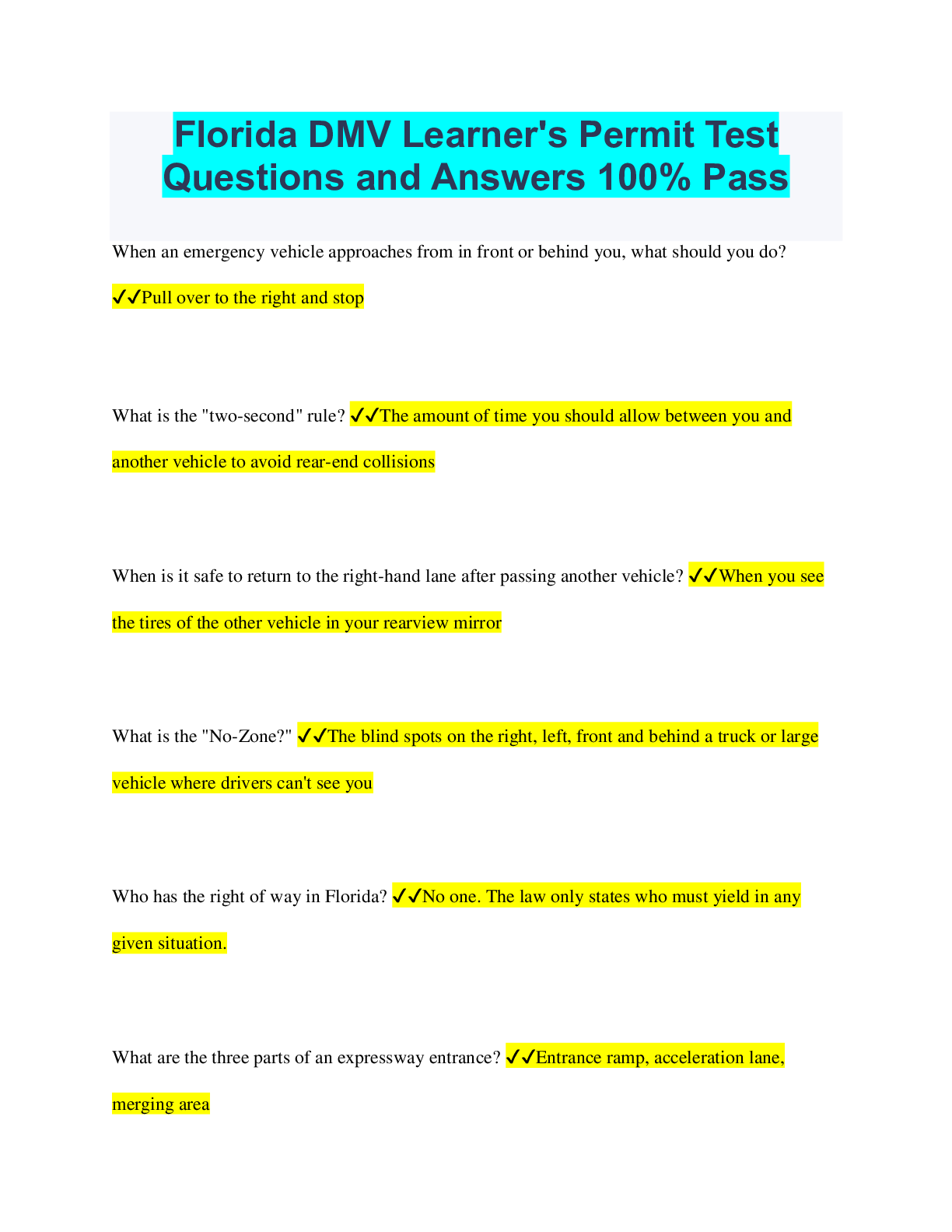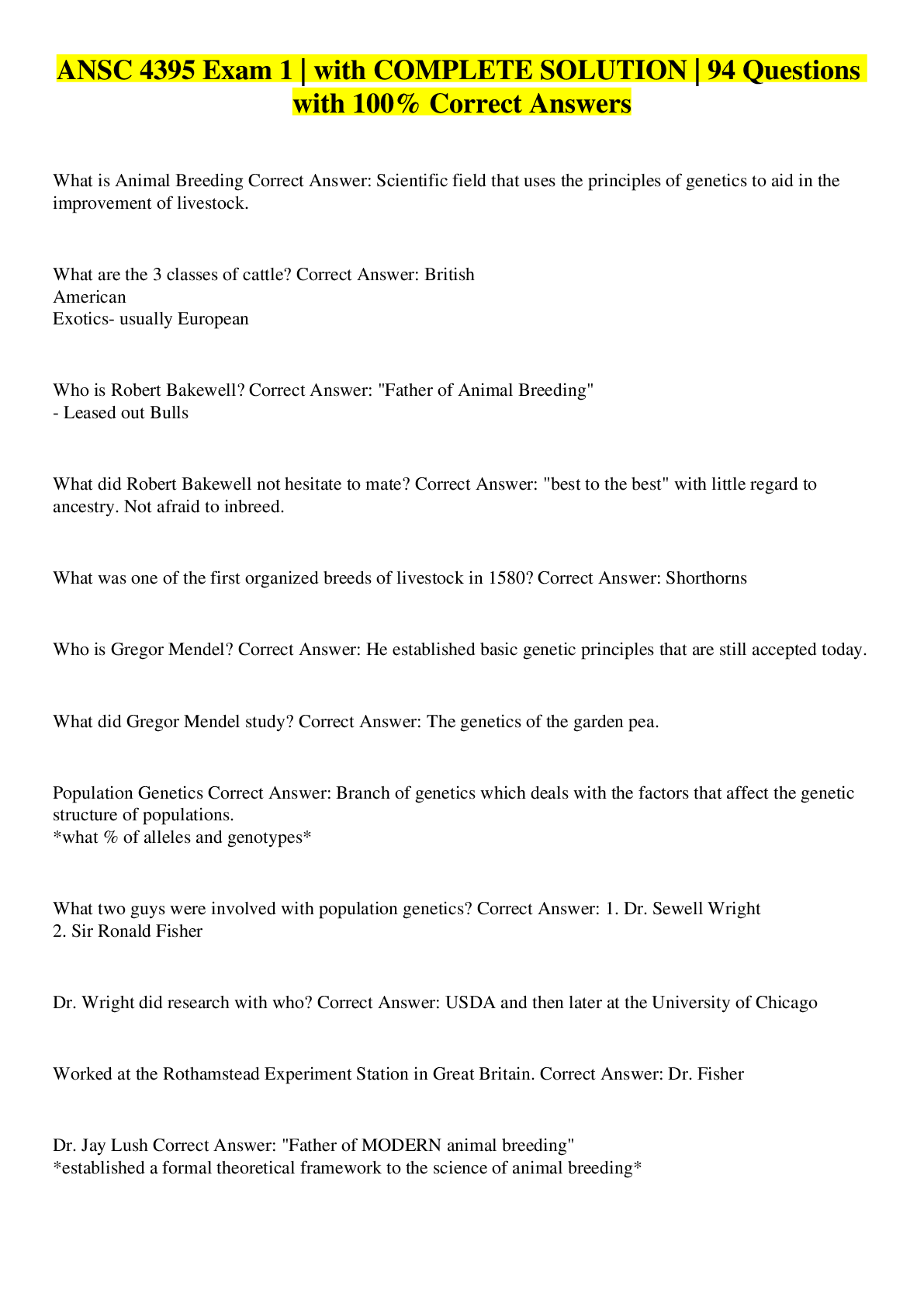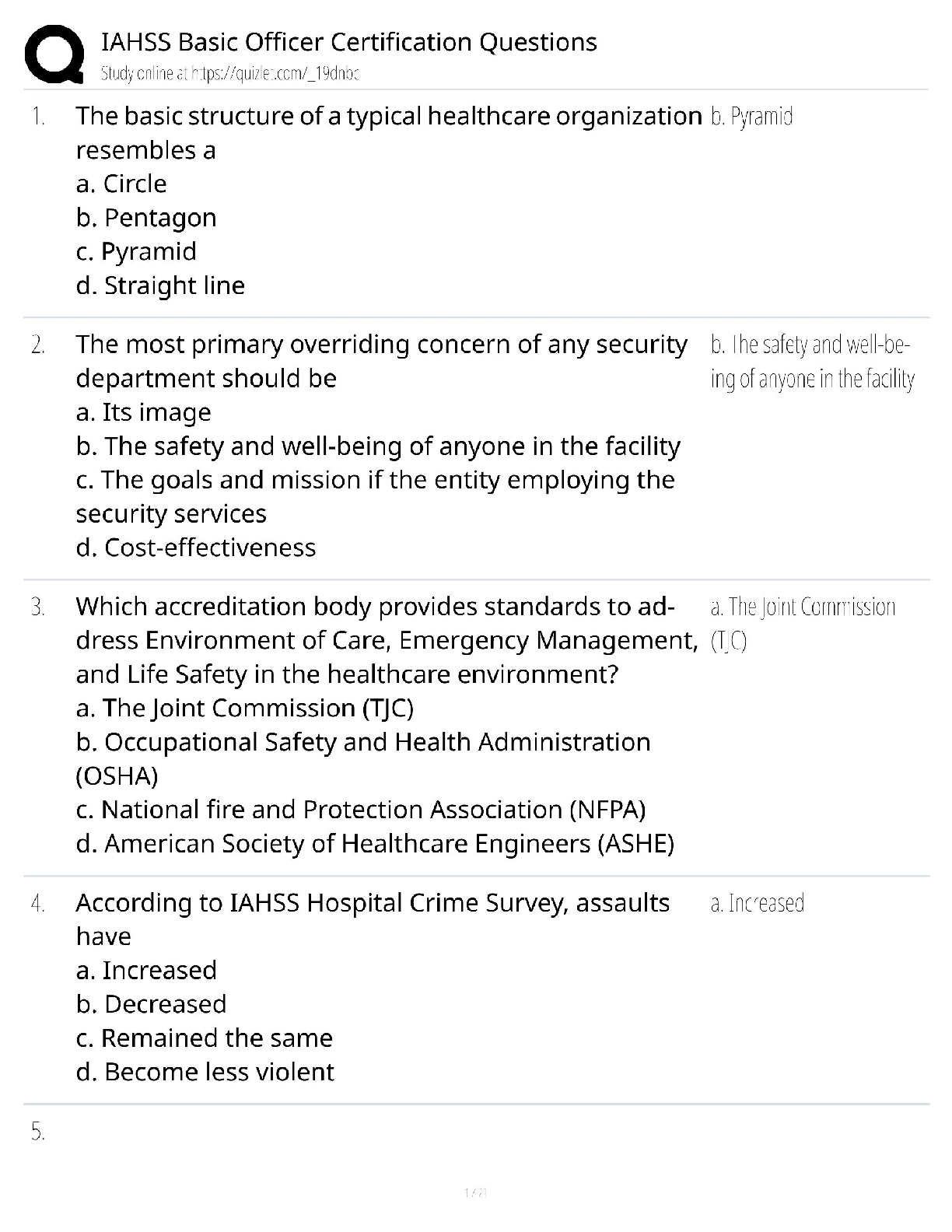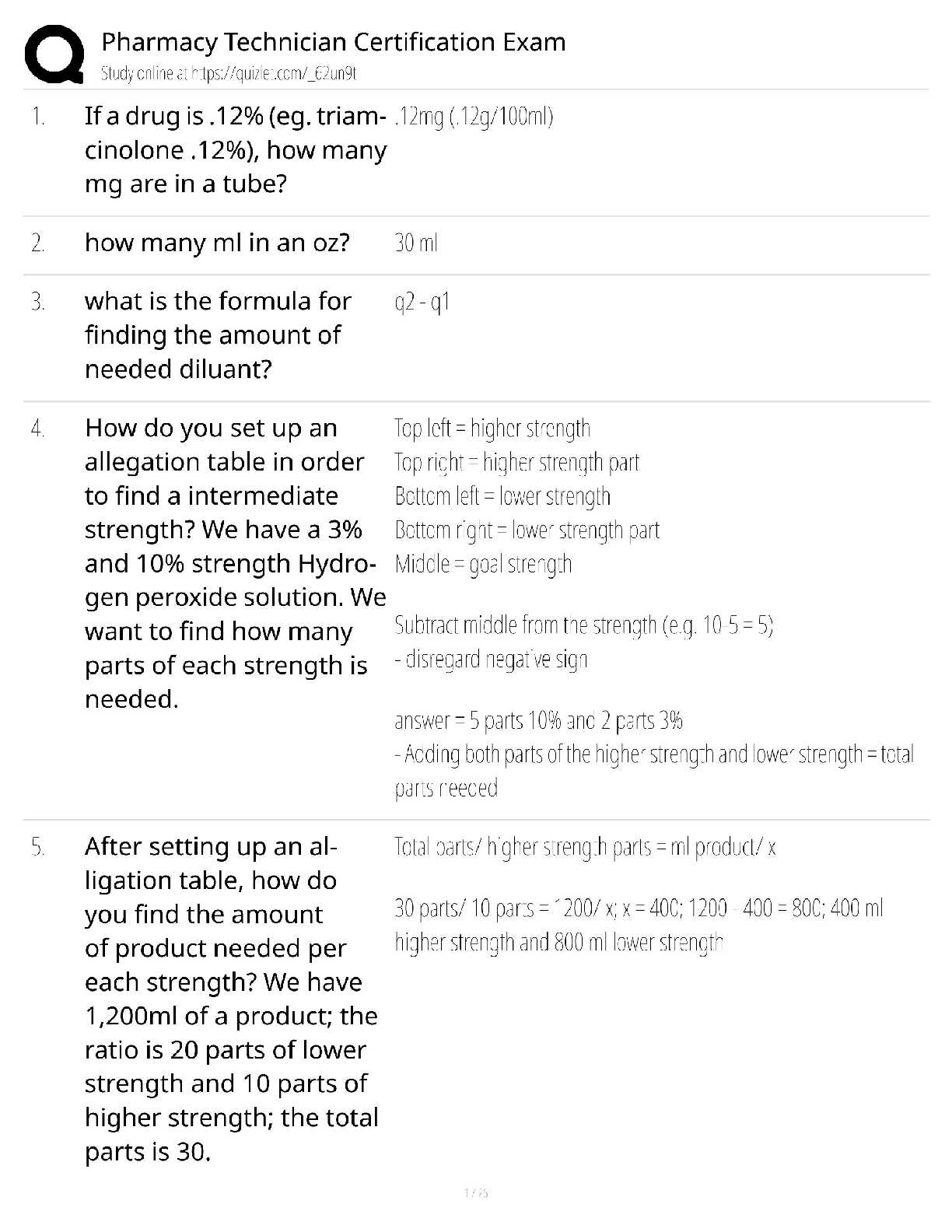Biology > QUESTIONS & ANSWERS > BI203 Final - ALL HW + Lecture Questions (All)
BI203 Final - ALL HW + Lecture Questions
Document Content and Description Below
BI203 Final - ALL HW + Lecture Questions Taken together, what is the total number of unique nucleotides in DNA and RNA? A. 4 B. 5 C. 8 D. 20 - ✔✔L1 - The correct answer is C, 8 unique nucle ... otides. Combine the three components of a nucleotide: the base, the sugar and the phosphate, and realize that although we abbreviate the A, C and G in DNA and RNA the same way, they are in fact not identical molecules (HINT: the sugars are different). Which of the following classes of amino acids is buried within the folded structure of the protein? A. Acidic B. Basic C. Polar D. Nonpolar - ✔✔L1 - Nonpolar amino acids are hydrophobic and are in the interior of proteins. Introducing a double bond into a fatty acid puts a(n) _______ into the conformation of the molecule. A. amino acid bulge B. kink C. reverse spiral D. branch - ✔✔L1 - B is correct. The double bond introduces a kink in the hydrocarbon chain. Which class of molecule accelerates transport across biological membranes? A. Carbohydrates B. Lipids C. Nucleic acids D. Proteins - ✔✔L1 - D is correct! Transporters in membranes are proteins in either the channel or carrier protein class. Which one of the sets of terms below BEST completes the following sentence? Monosaccharides are to ________ as _________ are to DNA. A. glycogen; nucleotides B. sugars; amino acids C. glycosidic linkages; phosphodiester bonds D. glycosidic linkages; hydrogen bonds - ✔✔HW 1 - A. glycogen; nucleotides - A is correct. Monosaccharides are the building blocks for more complex sugar molecules such as starch and glycogen, as nucleotides are the building blocks of DNA. B is incorrect since amino acids are not the building blocks of DNA. C is incorrect since if monosaccharides are to glycosidic linkages, then phosphodiester bonds would be specific to nucleotides, not DNA in general. D is similarly incorrect; the association is with the sugar and its respective bond, so the association is with nucleotides and not DNA in general. Again, A is the BEST answer. Since RNA contains ribose, a five carbon sugar, it can make glycosidic bonds and is considered a polysaccharide. True False - ✔✔HW 1 False - Although RNA does contain ribose as opposed to 2'-deoxyribose in DNA, it does not make glycosidic bonds and is not considered a polysaccharide. Like DNA, RNA can only make phosphodiester bonds between 3' hydroxyl groups and the 5' phosphate group of another nucleotide. Phospholipids consist of a 3-carbon core to which fatty acids and a phosphate group are linked. The most common 3-carbon core is ... A. serine B. glycerol C. glyceraldehyde D. dihydroxyacetone - ✔✔HW 1 - B. glycerol - Glycerol has three hydroxyl groups and is the 3-carbon core to which phosphate and two fatty acids are added in the four most common phospholipids. Cholesterol, a membrane lipid in animals, has a chemical structure similar to ... A. low density lipoprotein B. triacylglycerol C. estradiol D. phosphatidylinositol - ✔✔HW 1 - C. estradiol - Cholesterol is a precursor for several steroid hormones including testosterone and estradiol. Cholesterol is found in low density lipoprotein particles but does not share a chemical structure with it. Cholesterol is structurally unrelated to triacylglycerol and phosphatidylinositol. C is correct. For many enzymes that are activated by phosphorylation of a serine residue, the substitution of serine with aspartic acid results in continual unregulated activity (or in other words, constitutively active). What features of serine, phosphoserine and aspartic acid account for this phenomenon? A. Aspartic acid is more easily phosphorylated than serine, and is therefore considered more likely to lead to enzyme activation. B. Aspartic acid is more hydrophilic than serine because it is an acid, and thereby renders the enzyme more active. C. Aspartic acid resembles phosphoserine, thereby leading to constitutive activation. D. Phosphoserine is an ester of serine and phosphoric acid, while serine and aspartic acids are polar amino acids. - ✔✔HW 1 - C. Aspartic acid resembles phosphoserine, thereby leading to constitutive activation. - C is correct. Aspartic acid resembles phosphoserine, and therefore acts similar to an activated serine, and can often mimic its activity in enzymatic assays. A is incorrect since aspartic acid resembles phosphoserine but cannot itself be phosphorylated. B is incorrect, because the acidic nature and hydrophilicity of aspartic acid are not what renders the enzyme more active. D is a true statement but does not answer the question. A disulfide bond is formed between _______ residues. [Show More]
Last updated: 2 years ago
Preview 1 out of 74 pages

Buy this document to get the full access instantly
Instant Download Access after purchase
Buy NowInstant download
We Accept:

Reviews( 0 )
$11.00
Can't find what you want? Try our AI powered Search
Document information
Connected school, study & course
About the document
Uploaded On
Jan 20, 2023
Number of pages
74
Written in
All
Additional information
This document has been written for:
Uploaded
Jan 20, 2023
Downloads
0
Views
93





.png)




















